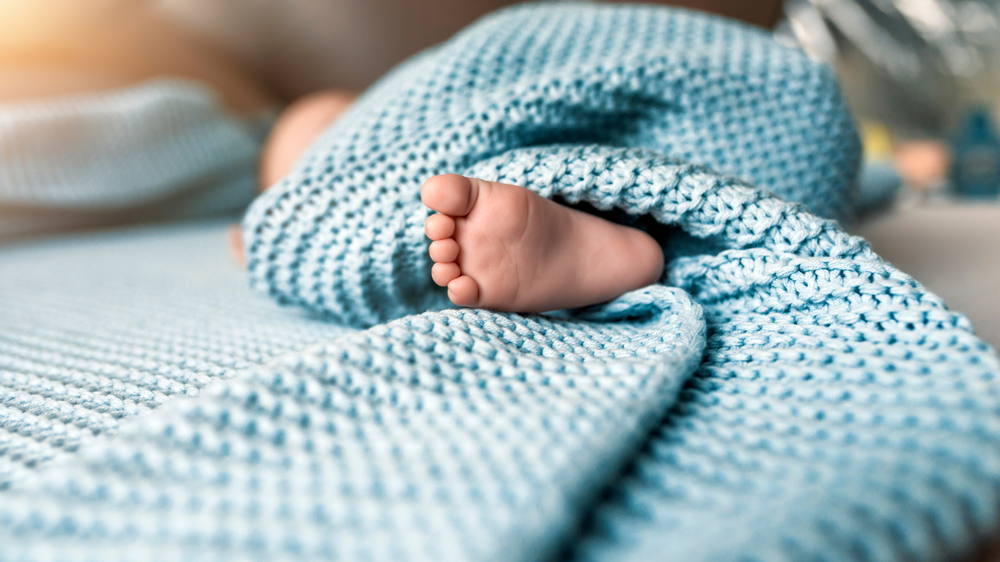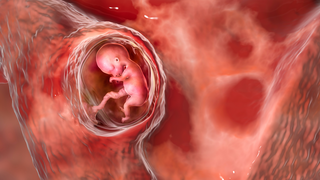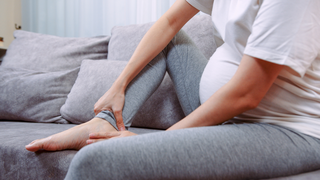In this article:
How Baby Foot Development Happens
A baby’s feet go through several stages of change before they take their first steps:- Birth to 12 Months: Soft and Flexible - At this stage, the baby's feet are mostly cartilage and fat. The arch hasn’t formed yet, so the feet look plump and flat.
- 1 to 3 Years: Strengthening Begins - Once babies start standing and walking, their foot muscles begin to strengthen. The arch begins to form slowly as the tendons tighten.
- 3 to 6 Years: Arch Development - For most children, the arch becomes visible between 3 and 6 years of age. Some may develop it earlier, others later — both are normal.
- 6 Years and Beyond: Permanent Structure - By this age, the bones and ligaments have matured, and the final foot structure is established.
Why Some Children Keep Flat Feet Longer
Every child’s body develops differently. Some may take a little longer for their arches to form.Common reasons include:
- Genetics — flat feet often run in families.
- Flexibility — some children have naturally looser ligaments.
- Chubby feet — extra fat can temporarily hide the arch.
- Delayed walking — muscle development may take longer.
Types of Flat Feet
There are two main types of flat feet doctors identify:- Flexible Flat Feet: The most common type. The foot looks flat when standing, but the arch appears when the child sits or tiptoes. Flexible flat feet are painless and completely harmless.
- Rigid Flat Feet: In this type, the arch is always missing, even when the child is sitting or tiptoeing. It may cause pain, stiffness, or difficulty walking, and needs evaluation by a paediatric orthopaedic specialist.
How to Check If It’s Normal
You can do a simple observation test at home:- Ask your child to stand, then go on their tiptoes.
- If an arch appears on tiptoe, the feet are flexible and normal.
- If the arch stays flat or your child complains of pain, talk to your doctor.
When to Relax
You can relax if your baby:- Has no pain or swelling in the feet
- Can walk, run, or play comfortably
- Shows no difference in leg strength or movement
- Is below six years old and otherwise developing typically
When to Worry or See a Doctor
You should consult your paediatrician or orthopaedic specialist if:- Your child complains of foot or ankle pain
- The feet appear stiff or uneven
- Shoes wear out unevenly (one side more than the other)
- The child walks awkwardly or avoids walking altogether
- Flat feet persist beyond age six or seem to worsen over time
Tips for Healthy Foot Development
- Encourage Barefoot Time - Let your baby play barefoot on soft, safe surfaces, such as grass or carpet. It helps strengthen foot muscles and improve balance.
- Choose the Right Shoes - Pick flexible, lightweight shoes that bend easily at the toes. Avoid rugged soles or tight footwear that restricts natural movement.
- Promote Active Play - Encourage your baby to crawl, climb, and run. These activities not only make for a happy, healthy baby but also help build muscle strength and coordination, supporting the natural development of their feet. Active play is a powerful tool in your hands to help ensure your baby's feet develop healthily.
- Massage the Feet - Gentle foot massages improve circulation and flexibility. Babies usually love this bonding time.
- Check for Posture - Watch your child’s standing and walking posture. If they often stand with their feet turned in or out, mention it during paediatric visits.
- Keep an Eye on Growth Spurts - Rapid growth phases can temporarily affect gait or balance, but they usually resolve on their own.
Common Myths About Flat Feet in Babies
| Myths | Facts |
| Flat feet are a sign of weak bones | Baby feet are soft and flat by nature; arches form gradually |
| Flat feet need corrective shoes | Most children develop arches without any treatment |
| Walking early causes flat feet | Walking strengthens muscles and supports arch formation |
| Flat feet cause long-term problems | Only rigid or painful flat feet require treatment |
Understanding these facts helps you focus on your baby’s comfort instead of unnecessary worry.
How Doctors Treat Persistent Flat Feet
If flat feet remain beyond six years or cause pain, doctors may recommend:- Stretching exercises for tight muscles.
- Custom shoe inserts for better support.
- Physiotherapy to improve balance and alignment.
- Surgery is only performed in rare, severe cases that affect walking.
Flat feet in babies are among the most common and misunderstood aspects of early development. In nearly all cases, it’s completely regular and temporary. Your baby’s arches are simply waiting for the right time to form as their bones, muscles, and ligaments strengthen through play, walking, and exploration.
The best support you can offer is freedom, barefoot time, flexible shoes, and plenty of active movement. Avoid rushing development or using corrective footwear unless your doctor advises otherwise. Most children develop their arches naturally by age 6, without intervention.
Whether you’re pregnant, a new mom, or navigating postpartum, you don’t have to do it alone. Join our support group to connect, share, and support one another.
FAQs on Flat Feet in Babies: When to Relax and When to Worry
- Are flat feet normal in babies?
Yes, most babies are born with flat feet because their arches haven’t developed yet. It forms gradually with age and activity. So, if you notice your baby's feet are flat, remember, it's a regular part of their development. You're doing a great job in understanding and supporting your baby's growth. - At what age should I expect my baby’s arches to appear?
Usually between 3 and 6 years, though some children take a bit longer. - Can flat feet cause pain or walking problems?
Only if the feet are rigid or if the child feels discomfort. Otherwise, flexible flat feet are harmless. - Should I buy arch support shoes for my toddler?
No, supportive shoes are not needed unless prescribed by a doctor. Flexible footwear encourages natural muscle growth. - Do flat feet run in families?
Yes, genetics can play a role. If parents have flat feet, their child might too — but it usually doesn’t cause any issues.






